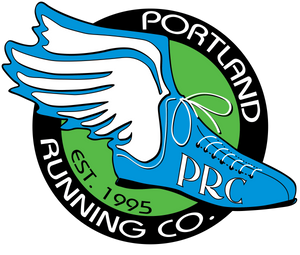
I ran my fastest half-marathon to date this year in Koriyama, Fukushima, Japan: 13.2 miles past rice fields, blooming spring colors, and a high school taiko band.
I think my speed was partially out of joy to be surrounded by sport and healthy competition in a place that is healing, partially due to the sweet hisashiburi (long time return) after a year of being outside of Fukushima, and partially because I was running side-by-side with my former editor from Japan’s largest daily newspaper.
After the race we were blessed with short massages by on-site physical therapists, greasy hamburgers, salty fries, and two IPAs.
I was asked to write a piece about my half-marathon in Fukushima, especially after the recent HBO series about Chernobyl; but all that I can think to say is that Fukushima has changed the course of my life and is part of me.
Fukushima is far more about life than about tragedy.

Before visiting Fukushima for the first time in November of 2011 my understanding was limited to mainstream media reports about the nuclear disaster, reports that distilled myriad stories into one tagline:
Fukushima means danger.
That first trip though, was filled with intense beauty: Japanese maple turning to rich fall colors covering the foothills that led to big mountains. It was filled with open arms from people who would one day become my closest friends.
I had expected to encounter a place that had been devastated. I was nervous and carried my own psychological baggage: a recent diagnosis of PTSD after working in disaster and post-conflict areas.
When the ground shook with aftershocks in Japan in 2011, I had flashbacks to my time covering the earthquake in Haiti the year before. Running helped me in Haiti, Nepal, Sri Lanka, and other places…but the salve that helped me with my anxiety elsewhere gave me shin splints in Japan.
That first trip to Fukushima, I experienced the opposite of my assumptions. I had no idea it would change the course of my life.
From 2011 to 2013 I lived and attended graduate school in Tokyo and worked as a sake bartender to afford frequent trips to one village 50km north of the Fukushima Nuclear Power Plant, a village that I now call my second home.
I lived with a family who has taught me more about resilience than any journalistic or academic article ever could. Those years my time was split between school and work in Tokyo and life in Fukushima.
There I documented, I made very close friends, I rode horses, I laughed, I cried, I hiked, I ate huge home cooked meals, and I ran. I learned more and more intimate stories that go far beyond what we have learned from media and over time I learned that it is truly important for victims of trauma to share their own stories.
From 2014 to 2018 I worked on my Ph.D. and I was able to turn the photojournalist baton over to Fukushima residents teaching them to photograph their own narratives while I studied their healing.
The family with whom I lived in Fukushima are all athletes. The three daughters are runners and the eldest is one of Fukushima’s fastest sprinters, the mother a fierce badminton player and the father a recent marathon finisher.
I work in Fukushima as a documentary photographer, a researcher and an educator. I work there to share that many stories from many lives exist far beyond what the world assumes.

Something unexpected and important that I have learned is therapeutic for both Fukushima residents and for me is to sometimes just show up and participate. I did not run in the Koriyama City Half Marathon as a destination run, nor did I do it to write an article.
I simply ran because I am a runner, and for eight years people in Fukushima have been letting me into their lives, and I know it is important to show up and participate. To put down my camera and my research tools and simply participate in sport, something that brings so many of us joy.
I think that we should proceed with caution when making comparisons between Chernobyl and Fukushima; the situations are far different and a close comparison again reduces the many narratives that exist and are important.
Eight years of documentary work and research in Fukushima, and I have learned that no matter how invisible I try to be, my presence makes a difference.
Allison Kwesell is a Portland-based photographer and a professor of crisis communication at Embry-Riddle Aeronautical University. Learn more about Allison and her work at allisonannekwesell.com.


